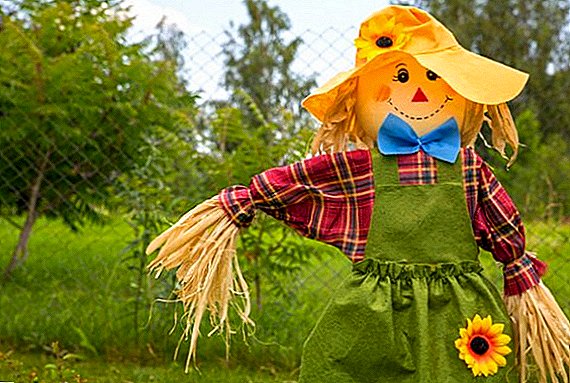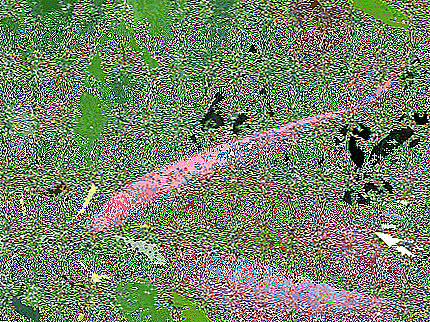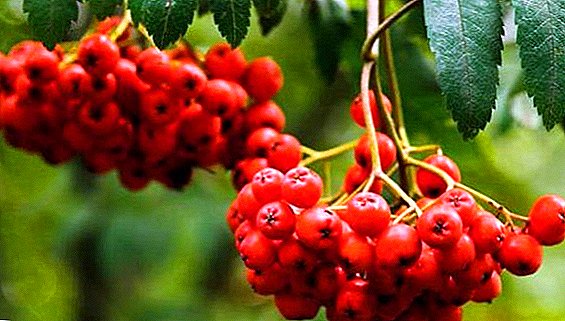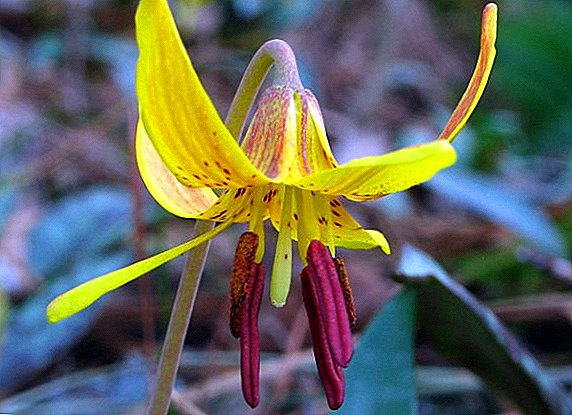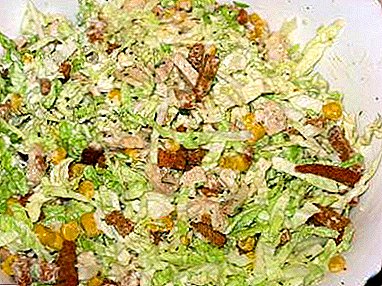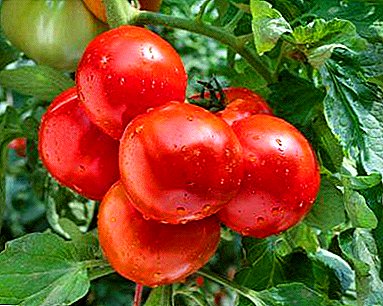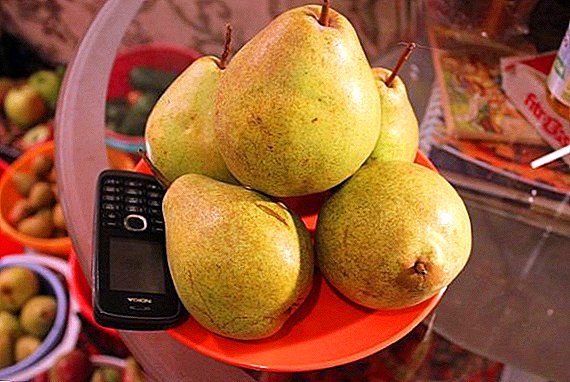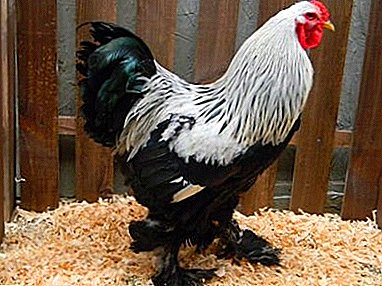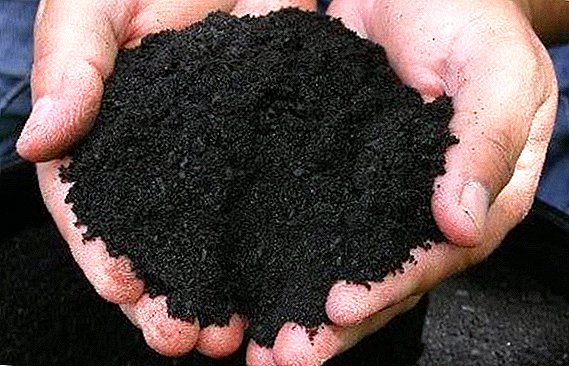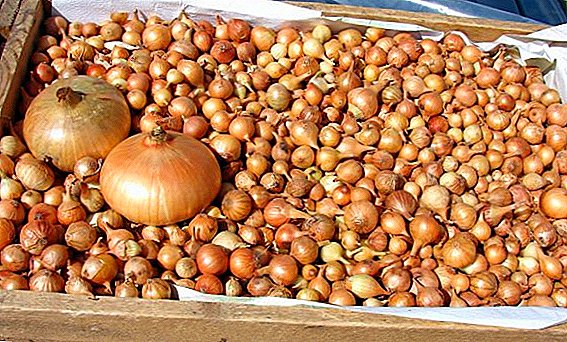 In our climate, onions are grown for two years. In the first year they sow seeds - chernushka. Onion sevok grows in the fall from these seeds, and in the spring of next year it is planted on the beds. From it large bulbs grow in autumn. Onions are a very popular vegetable crop in most countries of the world. It is grown for a long time and used in traditional medicine and cooking. You can grow in the garden as well as at home, on the windowsill.
In our climate, onions are grown for two years. In the first year they sow seeds - chernushka. Onion sevok grows in the fall from these seeds, and in the spring of next year it is planted on the beds. From it large bulbs grow in autumn. Onions are a very popular vegetable crop in most countries of the world. It is grown for a long time and used in traditional medicine and cooking. You can grow in the garden as well as at home, on the windowsill.
Description of onion Sevka: This culture is a small annual onions with a diameter of 1.5 - 2.5 cm.
Important! Onion sets is planting material, not a variety.
Before you start planting, you need to choose a good variety of onion seed, suitable for growth in a particular climate.
Popular varieties: Sturon, Stuttgarter Riesen, Centurion, Hercules, Red Baron.
Did you know? In nature, there are decorative types of onions. One of these is the Moli (Allium moly) onion, which has yellow flowers.
Choosing a place for planting onion Sevka
 In order to know how to plant this cultivated plant, you need to remember a few simple rules for care and cultivation. We start by choosing a landing site. The beds should be in a well-lit and blown breeze. Sevok does not tolerate excess moisture, so the beds should be in a place where rainwater does not stagnate. The land should be light, loose, fertile. On clay soil onion sevok not able to grow. The type of soil is easy to determine, just dig a shovel several times:
In order to know how to plant this cultivated plant, you need to remember a few simple rules for care and cultivation. We start by choosing a landing site. The beds should be in a well-lit and blown breeze. Sevok does not tolerate excess moisture, so the beds should be in a place where rainwater does not stagnate. The land should be light, loose, fertile. On clay soil onion sevok not able to grow. The type of soil is easy to determine, just dig a shovel several times:
- clay soil - heavy lump, sticks to the shovel (you need to make two - three buckets of peat or sand)
- sandy loam or loam - the earth is easily showered with shovels (the soil is suitable for cultivation)
- sandstone - the soil is crumbling and lumps and lumps are not formed (the introduction of humus or compost will make the soil suitable for sowing onions, will provide the earth with nutrients and will contribute to the retention of moisture)
 It is undesirable to plant in the ground, where dew garlic or beets. Pumpkin cultures are the best predecessors of sevka: tomatoes, zucchini, pumpkin. Grows well next door to carrots. It is impossible to plant the crop in the soil where fresh manure was applied. Only in a year this place will be favorable for landing. Care for sevsk in the open field is slightly different from the greenhouse.
It is undesirable to plant in the ground, where dew garlic or beets. Pumpkin cultures are the best predecessors of sevka: tomatoes, zucchini, pumpkin. Grows well next door to carrots. It is impossible to plant the crop in the soil where fresh manure was applied. Only in a year this place will be favorable for landing. Care for sevsk in the open field is slightly different from the greenhouse.Preparation of beds for onion sets
Prepare for planting in advance, preparing the bed back in the fall. The soil is well digged, weeds are removed and sprayed with a solution of copper sulfate. Before the first frosts, the bed is well watered, and in winter it is necessary to remove snow from it. This is done to ensure that the soil froze well, and next year the plant will be less damaged by diseases and pests.
 In the spring, the earth is loosened with a rake or slightly dug up so as not to disrupt the structure of the soil and retain moisture. Organic fertilizers and mineral fertilizers are applied - not too deep, so that the roots located in the upper layer of the earth receive nutrients. Good result gives complex fertilizer.
In the spring, the earth is loosened with a rake or slightly dug up so as not to disrupt the structure of the soil and retain moisture. Organic fertilizers and mineral fertilizers are applied - not too deep, so that the roots located in the upper layer of the earth receive nutrients. Good result gives complex fertilizer.
Seed preparation (chernushki)
Before planting, seed seeds should be checked for germination. A month before planting, you need to take a few seeds (15 - 20 pieces) and put them in a damp cloth. In a few weeks, it will be possible to judge whether these seeds should be used for sowing. If sprouts appear, then you can start sowing. Next you need to prepare the seed to prevent fungal diseases:
- The seeds are wrapped in cloth and immersed in hot water for 15 minutes.
- After that, immerse in cold water for 1 minute.
- Then the seeds are soaked for 24 hours in warm water.
- Stand 1-2 days wrapped in a damp cloth at room temperature.
 Seeds are prepared in another way: oxygen is supplied to a container with water under pressure and seeds are lowered there for 20 hours. After that they are dried. Seed Seed ready for planting.
Seeds are prepared in another way: oxygen is supplied to a container with water under pressure and seeds are lowered there for 20 hours. After that they are dried. Seed Seed ready for planting.Seed dates
Seeding time depends on the weather. You can sow chernushka in February warm days. But mostly sowing of seeds is carried out in early spring, when the earth is well warmed and you can dig it up.
How to sow onion seeds: planting methods
To know how easy it is to grow an onion set, you need to remember a few simple things. Cultivation is divided into two stages: planting seeds, which are called “chernushka”, and the subsequent planting of onion seed, obtained from seeds, in the spring. Sowing of seeds is carried out by a tape method. The bed should be about one meter wide and have loose soil. The depth of the grooves should be 1.5-2 cm in depth, and the distance between the seeds should be 1-1.5 cm. 
Important! If the seeds are rarely sown, then there will be a large onion sets. If often - nevyzrevshy small sevok. It is stored poorly and germinates early.
A bed with sown seeds is covered with a small layer of peat and carefully poured. Then we cover with a film to create a favorable water and air regime for seed germination. When the seeds sprout, remove the film. It is necessary to pay attention to the cultivation agrotechnology. How deeply the seeds are planted, the onion will be of this size: if the depth is 2-3 cm, the seedlings will be better. If you sow smaller - sprouts are unremarkable, thinned crops, grows large onion sevke. If you sow deep - the seeds do not germinate well, the bulbs are small or may not be formed at all.
The following crops are also cleared by seeds: cucumbers, beets, zucchini, tomatoes, beans, peas, pumpkins, watermelons, melons, corn and sunflower.
Care and cultivation of onion Sevka
 This culture does not require a lot of attention in the cultivation and care. The plant will be of good quality if you follow a few simple rules.
This culture does not require a lot of attention in the cultivation and care. The plant will be of good quality if you follow a few simple rules.
Watering the soil
Watering planting plants is not more than twice a week, only in May and June, if there is no rain. In the second half of the growing season should not be watered, because the bulbs ripen.
Weeding and loosening between the rows
One of the important rules is to remove weeds and not allow a soil crust to form. If you do not remove the weeds, the growth of the onion seedlings slows down. Soil crust does not allow shoots to grow smoothly and reduces the quality of the crop. Chernushka seeds can be mixed with radish or lettuce seeds. It helps to find out where the onion rows are located, as the lettuce and radish sprout faster. When the onion rises, beacon plants can be removed.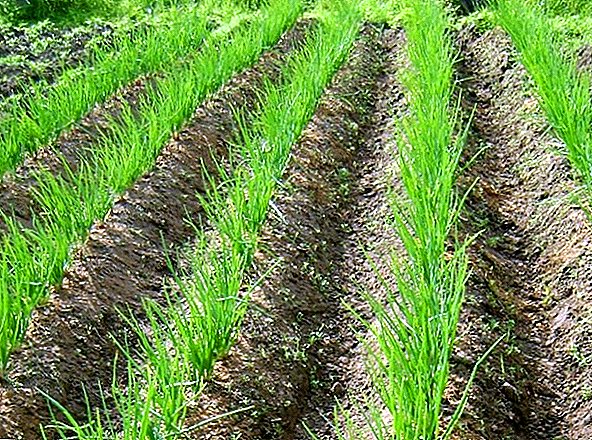 The first thinning is carried out when a few of these sheets appear at the shoot. Leave between them should be 1.5 - 2 cm. If this is not done, the leaves do not have time to form in sufficient quantities, and the bulbs are small.
The first thinning is carried out when a few of these sheets appear at the shoot. Leave between them should be 1.5 - 2 cm. If this is not done, the leaves do not have time to form in sufficient quantities, and the bulbs are small.
Did you know? People who work in greenhouses and grow green onions are said to suffer less from catarrhal diseases even during epidemics.
Fertilization
 Culture fertilized twice during the entire period of maturation. If the soil is poor in nutrients, then fertilize the third time. The first time make dressing, when there are green leaves. Fertilized with superphosphate, urea and potassium chloride. After a couple of weeks, a second dressing for seeding is carried out; the third time is carried out foliar feeding of crops with potash fertilizers, which help to ripen better.
Culture fertilized twice during the entire period of maturation. If the soil is poor in nutrients, then fertilize the third time. The first time make dressing, when there are green leaves. Fertilized with superphosphate, urea and potassium chloride. After a couple of weeks, a second dressing for seeding is carried out; the third time is carried out foliar feeding of crops with potash fertilizers, which help to ripen better.
Fertilizers play an important role in the care and cultivation of cultivated plants and their subsequent yield, namely mineral, potash, nitroammophoska, peat, potash salt, wood ash and potassium humate.
Preventive measures against pests and diseases
Diseases and pests bring great damage to the crop.
Bow sevok can be affected by such diseases:
- downy mildew;
- chalcosporosis;
- anthracnose;
- neck rot;
- mosaic bow.
Pest onion sting there are many. Here are some of them:
- onion fly;
- onion thrips;
- covertly;
- mole;
- onion hover;
- stem nematode.
 To prevent diseases and pests, it is necessary to clean the area from weeds, dead plants, rotten fruits, leaves. All waste at the site to burn or bury in a hole. Most of the pathogenic sources are stored in greenhouses and under film covers. Therefore, every year the soil must be decontaminated.
To prevent diseases and pests, it is necessary to clean the area from weeds, dead plants, rotten fruits, leaves. All waste at the site to burn or bury in a hole. Most of the pathogenic sources are stored in greenhouses and under film covers. Therefore, every year the soil must be decontaminated.Harvesting and storing onion seedlings
Harvest should be in August. But if in the summer it often rained, the culture can be harvested earlier, at the end of July. Since excessive moisture contributes to the re-germination of seed, and such a bow will be stored badly. Still need to pay attention to the color of the leaves. If they began to turn yellow, and the bulbs have reached the desired size, you can start collecting.
How to store onion sets? You need to choose a dark, dry and cool room, so that the vegetable does not sprout ahead of time. In order to keep the onion seed well, you need to remember some rules:
In order to keep the onion seed well, you need to remember some rules:
- Onion sets are sorted and left only hard, smooth, dense onions.
- Do not allow rotten planting material into the container with a bow.
- The roots must be dry.
- It is necessary to dry the plant well. Depends on this how long the set will be stored. You can weave braid and dry over the stove. Another drying option is to place the set in a nylon stocking and leave in a warm place.
 With the onset of spring, when the air temperature will be more than +10 ° C, you can start planting.
With the onset of spring, when the air temperature will be more than +10 ° C, you can start planting.

